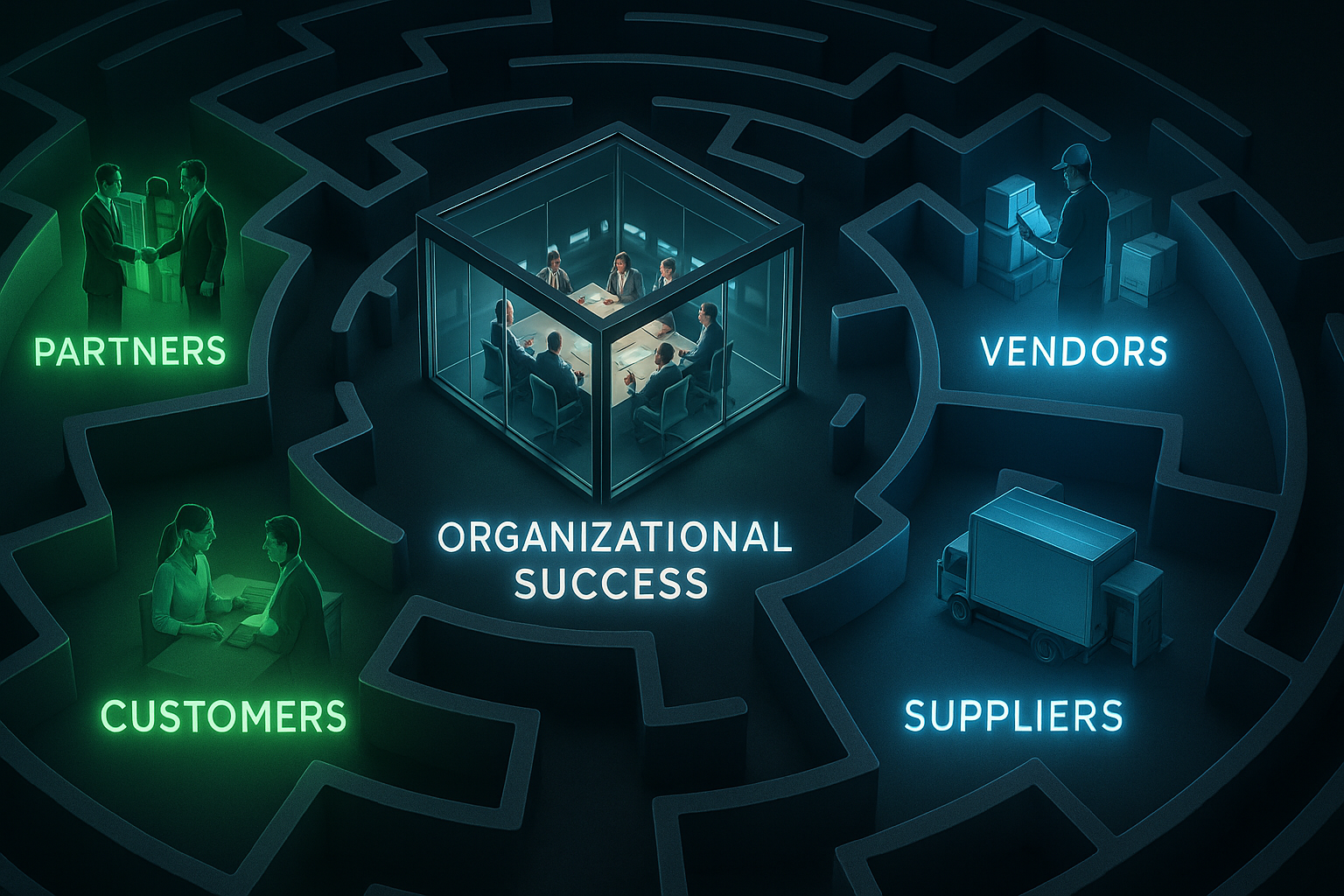
When most people hear “corporate training,” they picture what happens inside company walls – onboarding new hires, building leadership pipelines, covering compliance checkboxes, and rolling out tech skills. That focus makes sense. Employees are close, visible, and in constant need of development. But here’s the thing: if your training stops at the org chart, you’re missing a massive opportunity hiding in plain sight.
Think of it this way: your organization doesn’t exist in isolation. Every sale, every customer experience, every product shipped depends on people outside of your direct payroll. They’re not technically “your employees”, but their actions and knowledge directly shape how your brand is experienced in the real world. If your extended enterprise ecosystem is not equipped, your business feels it.
That’s why forward looking companies are rethinking what “corporate training” means. It’s no longer a service function tucked away for internal staff only. Instead, it’s evolving into a strategic engine that fuels performance across the extended enterprise ecosystem
This isn’t a shift away from internal training – it’s a broader view. One where your training function evolves from internal service provider to extended enterprise ecosystem growth driver.
You’ve likely got these areas covered. Most L&D teams have invested years into refining the core training programs that keep the organization steady.
These core training programs are training pathways executives can point to easily. They’re familiar, well-understood, and in many cases, absolutely non‑negotiable. In other words, they form the foundation of any serious corporate learning strategy:
These programs are essential. They power your internal engine. The mistake is thinking that your engine, is the whole vehicle.
Your extended enterprise ecosystem isn’t some abstract concept, it’s the living, breathing network of people who make your business function every single day.
There’s an entire constellation of partners, resellers, distributors, vendors, agencies, and customers shaping outcomes that ultimately tie back to your brand. Yet, many organizations never extend their training beyond the walls of HR.
Without partner training – you’re leaving performance, consistency, and customer trust up to chance.
Let’s break it down:
Think about your own organization. Where do the cracks show up? Is it customers getting mixed messages depending on who they talk to? Partners improvising because they don’t have the right resources? Suppliers cutting corners because they never received clear guidance?
Those aren’t minor annoyances, they’re signs of training gaps that directly translate into lost opportunities.
.
Let’s get honest: ignoring your external network introduces real business risk. Not theoretical, not someday, but real tangible risks that your organization can feel today.
In short: If your training only reaches employees – you’re betting your brand on people who might be flying blind.
This is where research and benchmarking put weight behind the argument. Studies show that extending training beyond employees isn’t just a theory, it delivers tangible business impact.
A Brandon Hall study found that 58% of companies say extended enterprise learning has reduced training costs, 55% say it improved customer relationships, and 41% report it drives better customer retention.
According to Intellum / Forrester, mature partner programs can lead to 2× revenue growth, with roughly 28% of revenue flowing through partner channels.
Moreover, for many firms, extended enterprise training accounts for less than 10% of the L&D budget — yet delivers disproportionately high value.
Now, recognizing who makes up your external network is only half the challenge.
Expanding training to external audiences doesn’t mean losing control, it shows you’re applying intentional design and the right tools to scale your reach. This is where strategy separates success from chaos.
Tips for Building a Scalable Extended Enterprise Ecosystem Training Strategy:
The ROI story here is powerful – extending training beyond the org chart delivers measurable business outcomes that executives care about.
Instead of framing the question as “why spend budget on people we don’t employ,” flip it to: “what opportunities are we leaving on the table by not training them?”
The trade-offs are clear: Because investing in your external network leads to measurable returns:
Training external audiences isn’t scope creep. It’s smart business.
Your business already stretches well beyond the walls of your office, which means your training strategy has to stretch with it. Limiting learning to employees alone is like fueling your engine, never changing the oil, and expecting the whole vehicle to run smoothly.
At the end of the day, corporate training isn’t confined to payroll. It’s about every person who represents your brand, influences your customers, or carries your mission into the market.
You’re a part of your extended enterprise ecosystem; all of your external partners shape your business outcomes.
Expanding training to your full extended enterprise ecosystem isn’t a nice extra, it’s the difference between growth that stalls and growth that scales.
If you’re ready to take the next step, LatitudeLearning is built to support exactly this kind of extended enterprise ecosystem training. With multi-portal flexibility, governance controls, and analytics that tie learning directly to business outcomes, our LMS helps you align employees, partners, customers, and more in a single platform.
Ready to see how it can work for your organization? Learn more about LatitudeLearning and start turning training into a true growth driver.